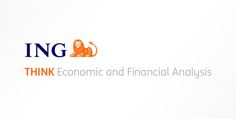Gold prices rebound after sliding below $4,000/oz amid safe-haven demand
After an already eventful week, markets will have more to digest on Friday. The US payroll numbers will be the highlight, although the potential spillovers to other markets have lessened. Furthermore, we see room for a steeper euro curve after the recent flattening spell. The 10Y Bund should also start underperforming swaps as risk sentiment improves
Back End Of Euro Curve Still Has Some Catching Up To Do
We’re coming to the end of an eventful week but with both eurozone inflation and US payrolls on the agenda, markets cannot put their feet up just yet. The recent push higher in euro rates has been coming from the front end of the curve, reflecting growing conviction that the European Central Bank will maintain its current policy rate of 2%. If this becomes the dominant narrative, then we can still see the 2Y rate rise by another 10bp.
In any case, the back end of the euro curve still has some room to catch up, because the 2s10s flattened by some 10bp since the peak in mid-July. We see plenty of reasons for steeper curves. For one, risk sentiment should see some improvement after this week’s data releases, and the uncertainty from trade tensions should lessen. Secondly, the main narrative remains one of increased fiscal stimulus going forward which, together with heightened issuance, should put upward pressure on longer rates. Lastly, the upward pressure from the back end is a global trend, leading to spillovers.
Meanwhile, the 10Y Bund-swap spread is close to zero again, but improving risk sentiment should have Bunds underperform going forward. Throughout the trade tensions over the past months, Bunds have reaffirmed their status as a safe haven. But with trade deals being struck, we may see lower demand going forward. The last stretch may still be bumpy, however, including, for instance, the potential escalation with Canada. In terms of levels, just after the German spending announcement, the 10Y Bund yield traded some 15bp above the swap. We may not go back to those levels, but even before the announcement the spread was 5bp, so there is clearly scope for more.
US Payrolls Surprises Could See the Belly Move Most
The US payroll numbers may be more instrumental to the Federal Reserve outlook than Jay Powell’s hawkish comments during this week’s meeting. A considerable cooling of the jobs market would pressure the Fed into cutting, but at the same time, we think the tariff-induced inflation won’t be ignored. A downside surprise may therefore especially express a strong performance in the belly of the curve; the front end is likely to remain relatively anchored on inflation worries, whilst the back end has to deal with (global) fiscal pressures.
Where US payroll numbers were also a strong driver of euro rates in 2024, that correlation seems to have fallen significantly. So while a big upside or downside surprise could trigger strong moves in US rates, the spillovers should be limited. For tenors up to 2-Years, the correlation is even close to zero. For sterling rates, however, the correlation with the US remains stronger, with 10Y Gilts especially sensitive to moves in USTs.
Friday’s Events and Market Views
Consensus sees eurozone core CPI inflation remaining stable at 2.3% for June. The headline number is seen at 1.9%, just below target. US nonfarm payroll numbers are expected to come in cooler at 105K, well below the 147K previously. The unemployment rate is predicted to tick up from 4.2% to 4.3%. Other interesting data includes the ISM manufacturing numbers and the Michigan sentiment indices, with both expected to see a slight improvement.
Meanwhile, we also have the latest developments in trade deals with the US to deal with. Trump has pushed the deadline by a week, but also hiked the tariffs for certain countries, including its close trading partner Canada. We can therefore expect plenty of trade-related headlines.
Disclaimer: This publication has been prepared by ING solely for information purposes irrespective of a particular user’s means, financial situation or investment objectives. The information does not constitute investment recommendation, and nor is it investment, legal or tax advice or an offer or solicitation to purchase or sell any financial instrument. Read more
